
Ten Ways To Care For Your Gear
Diving is very equipment intensive which has become a reason to dive in its own right; people like to buy, use and talk about gear. It makes diving fun and fashionable. It provides divers with a means to customise their dive experience. It provides people like me with a job! However, dive gear is sensitive and delicate equipment (despite the efforts of the manufacturers to make it tough) that is prone to damage from wear, poor maintenance and the environment. If a diver does not pay diligent attention to his gear he will surely run into costly and potentially dangerous situations later on.
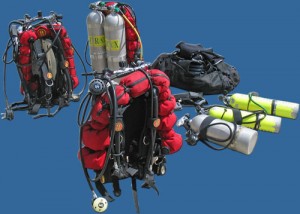
Arguably The Force That Drove Tec Diving Into Its Current Popular State Was The Equipment Possibilities!
Most divers do look after their gear to the best of their knowledge, and a good proportion of divers are well versed in the tricks and tips necessary to keep your gear fresh, but not every diver is an engineer. That’s why I’ve compiled this article with ten of the best tips and tricks I’ve learnt along the way, most of which were created purely to make your life easier or make your gear last longer. So sit back and enjoy the collected wisdom of the entire dive community condensed into one easy-to-read guide!
Packing and Preparing
1) Mark Your Stuff – Your gear is valuable to you, it was probably expensive and, more importantly, it’s yours. Once you’ve cut yourself free from a fishing line with a knife it becomes “my trusty knife”, not just some tool. Likewise, once you’ve done twenty hard dives in a pair of fins they will become your favourite fins. You’ll want to keep these items, so make sure everyone else knows that they are yours! Most other divers have no intention of stealing your stuff, but on a busy boat where lots of gear looks the same then its easy to get confused. Avoid embarrassing yourself by accusing a fellow diver of theft by marking your gear with a very obvious and unique marking, especially on small goods that can “walk” easily. Bear in mind that even permanent pen can rub off so freshen your markings as they fade or consider engraving your name on cheaper items.
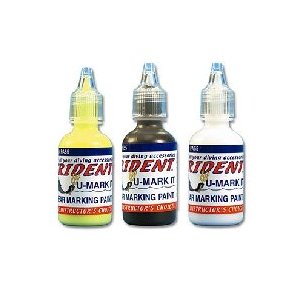
There Are Many Products On The Market The Allow You To Mark Your Gear Clearly
2) Bring O-rings and Tie Wraps – This is probably one of my most important rules; carry o-rings and tie-wraps of different sizes with you on every dive expedition. Just as WD-40 and duck tape will fix anything on land, o-rings and tie wraps will fix anything in the sea. It is guaranteed that someone on the boat (maybe you) will require either a new ring, or something will burst open, and you can be their hero by giving them an instant fix. You can tie wrap almost any broken dive gear back to functioning, and often you wont need to fix it any further – tie wraps are that strong!
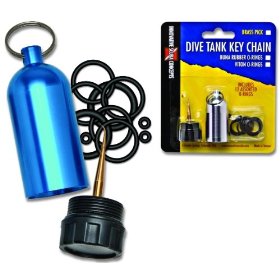
Get An O-ring Tank Keychain And Never Worry About Forgetting O-rings Again!
3) Wrap Your Reg In Your Suit – This is a really simple tip that I rarely see done, yet it saves a lot of expensive damage. When you’re packing your dive gear (especially if you are using an equipment box) it is important that you look after your reg, especially if you want to keep it looking smart, so all I do is use my wetsuit as a packing material and wrap my regulator set inside it for cushioning. It also protects it from sun damage and dust as well as heavy knocks.
On The Boat
4) Review the Boat’s Safety Gear, and Know Your Own – Once you’ve arrived at the boat and are getting ready to set off, please pay attention to the boat briefing! I’ve given many briefings and watched as a couple or family have giggled their way through it, only to come up to me during the day asking stupid questions that I’d already answered. Also, during the briefing, ask questions about other safety precautions in place on the boat, such as where the emergency oxygen is kept and where the first air box is. Ensure you fully review your own safety equipment too, check the condition of your SMB and your alternate air source. Ensure your knife is sharp. Do all this at the beginning of the day and you can relax for the rest of the trip.
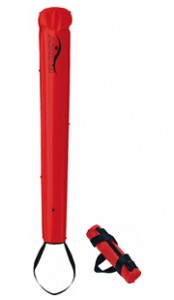
A Good SMB Is Vital Safety Gear, Buy One, Learn How To Use It And Take It With You!
5) Silica Gel – For the avid photographers among you this will seem like an obvious tip, yet I see many divers setting up their underwater cameras without putting a desiccant in the case with the camera. Silica gel packets (the little paper pockets you get inside electronics packaging that tell you not to eat them) are designed to reduce the humidity of a confined space by drawing the moisture from the air. The inside of an underwater camera housing can get moist from condensation (especially if you packed the camera in a humid environment), pop in a silica gel packet to alleviate worries. Also, try to put the camera into the housing in an air conditioned room because the air will be drier.
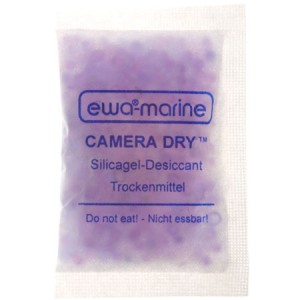
You Can Buy Silica Gel Specially For Cameras, Though The Packs You Get In Packaging Are Just As Good… And Free!
6) Check For Bugs – This one applies to every country, but is particularly important for divers in warm climates. Whether its a spider that climbed into your regulator when it was stored in the shed, a scorpion in your booties or a wasp in your gloves – check for bugs before you gamely start sucking on your regulator or squeezing your toes into your boots. You’d be amazed at how many people watch as ants get blasted from their regulator during gear setup!
7) Wet Your Tank Band – This is a golden oldie that get ignored by almost every novice I’ve every dived with. When you dive with a BCD every day then you have little to worry about, when you strap your tank in it will stay strapped in. However, if you are an infrequent diver (i.e. You don’t dive for work) then you will likely allow your BCD to dry out. When you go to strap your tank in, no matter how tight your pull the tank band, when the band gets wet it will swell a little which will loosen your tank. Usually this is very little and is no problem, but for real peace of mind all you have to do is wet the band prior to strapping in your tank and you’ll have no worries!
8 ) Spit In Your Mask – Another tip straight from your grandfather’s mouth. Yes, spitting in your mask keeps it from fogging up, there is no doubt about it – it is not an old wife’s tale. It doesn’t have to be disgusting, and if you can’t face spitting in public then just lick your thumb and rub the saliva on the glass. You can use de-fogging sprays but I’m still a fan of the human product because it means there is less for me to carry and it’s one less thing for me to forget!
After The Dive
9) Dry Your Dust Cap – Here comes the pet peeve of every Divemaster, everywhere – once you have finished your days diving you will likely strip down your gear. As you do so you will take your first stage off the the tank valve, at this point you’d be inclined to replace the dust cap over the delicate regulator filter, but first make sure that the cap is completely dry by quickly blasting it with air from the tank. DO NOT blast the first stage filter! You’ll drive dirt and water deeper into the regulator, only dry the dust cap!
10) Rinse your gear – Coming in last but absolutely not least is the top tip for gear longevity: once you’ve disassembled your gear ensure you fully rinse everything of salt water (or pool water). Use a disinfectant but dilute it so it’s not too harsh. When you’re rinsing your regulator ensure you don’t get water into the first stage, either avoid dunking it altogether or make damn sure that dust cap is in place. Every couple of months (depending on usage) you should fully flush the inside of your BCD with baby shampoo and warm water – pour it in through the top dump valve (which will unscrew) and let it soak, then after a few hours you should agitate it and flush out the soapy water. Rinse it clean. On top of this, ensure you service your gear at least yearly to ensure the rings and gaskets are in good condition.
Final Thoughts
Diving is an odd hobby because we are all trained how to use the equipment properly but very few divers are taught how to fully care for their expensive pieces of dive paraphernalia. It is simply tricks and tips like those above that keep your gear in good condition, looking slick and working at optimum levels for years to come.
Do you have a special maintenance routine? Do you have a particular trick that you are very proud of and stick to rigidly? What is the most blatant violation of dive gear maintenance that you’ve ever seen? We’d love to hear your stories and comments, please share them using the section bellow.
Happy (well maintained) Bubbles!